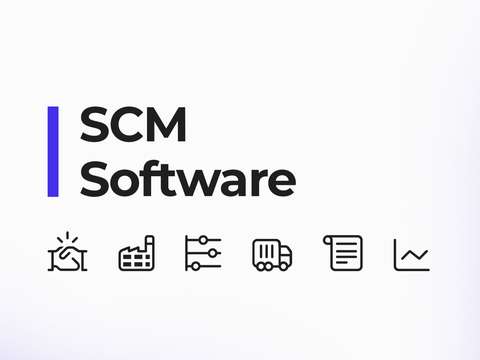Nowadays, shopping doesn't conclude with the delivery of the product. Today's customers also expect excellent post-purchase service, with returns and exchanges being among the most critical elements.
While around 30% of online purchases end up being returned, 58% of users demand a process that is easy, fast, and convenient. Therefore, all major eCommerce brands are focused on providing a safe, fast and simple return process that is well-planned and optimized on each step.
What is the return process flow?
In eCommerce, the return process flow refers to the structured steps customers follow to return purchased products. This cycle starts with the customer's return request and ends with either a refund, a product exchange, or, in some cases, a rejection of the return by the retailer.
While the general framework is similar across online stores, each retailer may have a unique return process with specific policies, conditions, and procedures.
Reasons to improve the return process
- Increase customer satisfaction: A good return flow provides a very positive experience for the buyer, improving their perception of the store and encouraging their loyalty. In fact, a positive return experience can turn dissatisfied customers into loyal followers.
- Reduce operational costs: An automated return process frees up work from your team so they can focus on higher-value tasks. Additionally, accurate processing reduces logistical and transportation risks.
- Improve reputation: By prioritizing satisfaction and simplifying returns, you can elevate your brand's position and gain a competitive advantage that sets you apart from the rest.
- Maximize revenue. Optimized returns can even serve as a strategic tool to maximize revenue. For example, by using a robust returns management system, such as Outvio, you can encourage customers to exchange returned items for higher-value products.
- A deeper understanding of your business: By integrating professional software for optimizing the return process, you will have access to real-time performance analytics. Identifying and understanding return patterns is essential for lowering them.
Steps of a good and efficient return process flow
Step 1 - Customer eequests a return
The return process officially begins when a customer decides to return a product and generates an RMA. This could be due to a defect, receiving the wrong item, or simply not being satisfied with their purchase. To make this process smooth and efficient, your eCommerce store should use an RMA system.
What you need to do:
- Implement an automated return portal where customers can request returns 24/7
- Offer clear return instructions on your website and emails to minimize unnecessary support inquiries
Step 2 - Return request validation
Once a return request is submitted, it must be reviewed to ensure it meets your store’s return policy. Automating this step saves time and reduces human errors.
What you need to do:
- Check eligibility based on factors like return window, product condition, and reason for return
- Verify proof of purchase (order number, receipt, or invoice)
- Approve or reject the request based on your return guidelines. Use return management software to speed up this process and avoid bottlenecks
Step 3 - Customer receives return instructions & label
After approval, the next step is providing the customer with the necessary return documents and instructions. The return label ensures the package is correctly routed to the right return center.
What you need to do:
- Generate and send a return label via email or the return portal
- Offer multiple return options, such as home pickup or drop-off at a partner location
- Provide clear packaging instructions to ensure the product is returned in proper condition
Step 4 - Customer prepares the return package
The customer now needs to prepare the item for return. If packaging isn’t done correctly, you may receive damaged goods that can’t be resold.
What you need to do:
- Instruct customers to use original packaging when possible
- Require all components, such as accessories, manuals, and original tags
- Specify packaging guidelines, like sealing the box securely or using bubble wrap for fragile items
Step 5 - Return shipment & customer drop-off/pickup
Once the package is ready, the next step is getting it back to you. Your eCommerce store must ensure a hassle-free return experience by offering flexible shipping options.
What you need to do:
- Offer multiple return methods, such as courier pickup, drop-off at designated locations, or in-store returns
- Provide tracking information so customers know their return is in progress
- Ensure carriers handle returns efficiently by working with reliable logistics partners
Step 6 - Return tracking & notifications
Customers expect the same level of tracking for their return as they did for their original order. Keeping them informed builds trust and improves their post-purchase experience.
What you need to do:
- Send automated status updates via email, WhatsApp or SMS (e.g., “Return in Transit,” “Return Received”)
- Allow customers to check return status via a tracking page on your website
- Respond to customer inquiries quickly if they ask about their return
Step 7 - Inspection & processing at the return facility
Once the return package arrives at your warehouse, it must be inspected to verify that it matches the original return request. This step ensures the returned item is in an acceptable condition before issuing a refund or exchange.
What you need to do:
- Inspect the product condition to ensure it’s unused, undamaged, and includes all parts
- Verify the return matches the request, checking for inconsistencies
- Sort items into categories: restock, refurbish, recycle, or discard based on condition
Step 8 - Return resolution & refund processing
After the inspection is complete, the next step is refunding or exchanging the item based on the customer’s selected option. Managing this quickly is crucial to maintaining customer satisfaction.
What you need to do:
- Issue refunds or store credits within the promised timeframe
- Process exchanges efficiently by sending the replacement product promptly
- Adjust inventory to reflect the return, whether restocking the item or marking it as damaged
Step 9 - Inventory restocking & data analysis
Returns are not just about giving refunds; they also provide insights into product quality and customer preferences. Use return data to improve your business operations.
What you need to do:
- Update inventory levels based on returned items that are restockable
- Analyze return reasons to identify patterns (e.g., sizing issues, product defects)
- Use data for quality control by improving product descriptions, images, or packaging
Best practices to monetise your return flow and improve profitability
1. Integrate a returns management software
Handling returns manually is inefficient and costly. A robust returns management software streamlines the process by centralizing return requests, automating label generation, coordinating pickups, and providing real-time tracking.
This eliminates manual errors, speeds up processing, and enhances the customer experience while giving you more control over the return cycle.
By integrating such software, your store can also introduce upselling opportunities during the return process, encouraging customers to browse for alternative items instead of requesting a refund. With various return solutions available, choosing the right one depends on your business size, volume, and specific return needs.
2. Distinguishing between controllable and uncontrollable returns
Not all returns can be prevented, but focusing on the ones you can control will help reduce unnecessary costs.
Controllable returns stem from issues within your eCommerce operations, such as misleading product descriptions, poor packaging, or delayed deliveries. Fixing these factors can significantly lower return rates. On the other hand, uncontrollable returns—such as customers changing their minds or products being damaged during transit—are inevitable but should be managed efficiently.
Instead of wasting resources trying to eliminate these entirely, focus on optimizing how they are processed to minimize their financial impact.
3. Creating a workflow for your return management process
A well-structured return workflow ensures a seamless process from request initiation to refund or exchange completion. This includes automated return approvals, dynamic carrier selection, fraud prevention mechanisms, and strategic return routing.
For example, requesting photos before approving returns for damaged items reduces fraud. Automating carrier selection ensures cost-efficient shipping, while directing returns to specific warehouses, resale channels, or store locations can help minimize unnecessary costs. By using smart workflows, your return process shifts from being a liability to an optimized revenue retention strategy.
4. Encourage exchanges for higher-value products
Exchanges retain revenue, prevent refund-related losses, and help keep customers engaged with your store. To maximize this, your return portal should automatically suggest alternative products preferably higher-value items, before finalizing a refund.
If a customer doesn’t find a suitable exchange, offering store credit as an alternative incentivizes future purchases rather than immediate cash refunds. Discounts on recommended products or exclusive offers can also encourage customers to convert their returns into a new sale instead of a lost transaction.
5. Personalize the entire return process and tracking
A return portal that matches your store’s branding makes the experience more seamless and reassuring for customers. Using your company’s colors, logo, and brand voice throughout the return process builds trust and familiarity.
From automated emails to tracking pages and return labels, every touchpoint should feel like an extension of your website. This consistency reinforces your brand identity and ensures that even a return interaction leaves a positive impression, increasing the likelihood of repeat purchases.
6. Leverage return data for business improvements
Returns provide valuable insights that can help refine your operations. Analyzing return reasons, return rates, and carrier performance allows you to make data-driven decisions that reduce unnecessary returns and improve logistics.
- Return reason analysis helps detect common issues such as misleading product descriptions or packaging flaws, allowing you to adjust accordingly
- Tracking return rates by product or sales channel identifies problematic items that may need better descriptions or quality improvements
- Carrier performance evaluation helps determine which logistics partners provide the most efficient and cost-effective return solutions
Conclusion
The modern landscape of eCommerce extends far beyond the initial purchase, with post-purchase service, including returns and exchanges, now playing a pivotal role in customer satisfaction. As evidenced by statistics showing a significant percentage of online purchases being returned, the demand for a seamless return process is evident. Major eCommerce brands are responding by prioritizing safe, fast, and simple return processes, emphasizing the importance of thorough planning and optimization at each step.
Understanding the returns process is essential for eCommerce success. From the customer's initial return request to the resolution and subsequent return label generation, each step requires careful consideration. By leveraging efficient return management software, businesses can automate processes, streamline operations, and enhance the overall customer experience.
Furthermore, distinguishing between controllable and uncontrollable returns allows businesses to allocate resources effectively. Proactively addressing controllable returns through improved product descriptions, packaging, and delivery times can significantly reduce return rates and enhance customer satisfaction.
Implementing personalized return processes, encouraging exchanges for higher-value products, and analyzing return data are strategies that can further optimize the returns process. By leveraging these practices and staying vigilant about carrier effectiveness, eCommerce businesses can not only reduce costs but also maximize revenue and foster stronger customer relationships in an increasingly competitive market.




